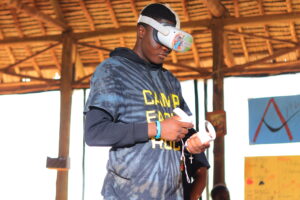TryEngineering and the Signal Processing Society Continue Their Partnership!
TryEngineering and the Pre-University Coordination Committee are proud to continue our partnership with the IEEE Signal Processing Society!
Founded in 1948, the Signal Processing Society (SPS) was IEEE’s first society. After 75 years, they have built a membership base of over 20,000 signal processing engineers, students, and professionals. Their goal is to advance the development and spread of scientific information and resources, in order to educate the signal processing community.
TryEngineering and the Pre-University Coordination Committee are tasked with inspiring the engineers of tomorrow. This partnership with SPS has been essential to achieving our goal. While TryEngineering has a team of staff and volunteers who are engaged in developing engineering resources for adults who work with school-aged children, SPS has the subject matter expertise. By working in collaboration, we have been able to increase the global reach and awareness of SPS technologies. This in turn, will inspire many school-aged students to consider a career in engineering!
Together, TryEngineering and SPS have developed an SPS thematic page on the TryEngineering website. This page features specifically curated SPS content, such as lesson plans, articles, and games. The page also includes an SPS Overview Video, developed by the SPS Education Committee, which perfectly explains the world of signal processing so that even the youngest of students are able to understand.
The Signal Processing Society also provided $3,000 in funding, which was awarded to 2024 STEM grant programs with a signal processing engineering focus. The 3 programs that were awarded with this funding are:
- IEEE Signal Processing K12 STEM Program – 4th edition on Wheels – IEEE SPS Bangalore Chapter – Region 10
- Train the STEM Trainers in Secondary Schools- Multiplier Effect STEM Outreach – Nnamdi Azikiwe University – Region 8
- Workshop on Computer Programming and IoT for Regular dan Vocational High Schools in Subdistrict Baleendah, Bandung, Indonesia – IEEE SPS Indonesia Chapter – Region 10
Together, SPS and TryEngineering are also developing a series of SPS STEM Stories, which spotlight the programs and volunteers who are making a difference in their communities. The first of these SPS Spotlights is featuring the Kenya Section of IEEE, and their program: IEEE Signal Processing Society K12 Initiative Using VR and IoT, which immersed participants aged 13-17 and highlighted the global relevance of STEM.
If you know a program or volunteer who is making an impact in the world of signal processing on behalf of IEEE, be sure to let us know by sending us an email at: tryengineering@ieee.org




 There were a few challenges that had to be overcome to make this program a success, one of which was the change in VR perception. Many participants had viewed VR as a solely western concept, but the K12 Initiative successfully shifted this perspective, highlighting the global relevance and accessibility of VR. Another challenge was Internet of Things (IoT) enlightenment. Participants discovered new insights into sensors during the IoT session on traffic lights and police sirens. Despite initial perceptions of IoT complexity, the K12 Initiative simplified the concept effectively.
There were a few challenges that had to be overcome to make this program a success, one of which was the change in VR perception. Many participants had viewed VR as a solely western concept, but the K12 Initiative successfully shifted this perspective, highlighting the global relevance and accessibility of VR. Another challenge was Internet of Things (IoT) enlightenment. Participants discovered new insights into sensors during the IoT session on traffic lights and police sirens. Despite initial perceptions of IoT complexity, the K12 Initiative simplified the concept effectively.

















